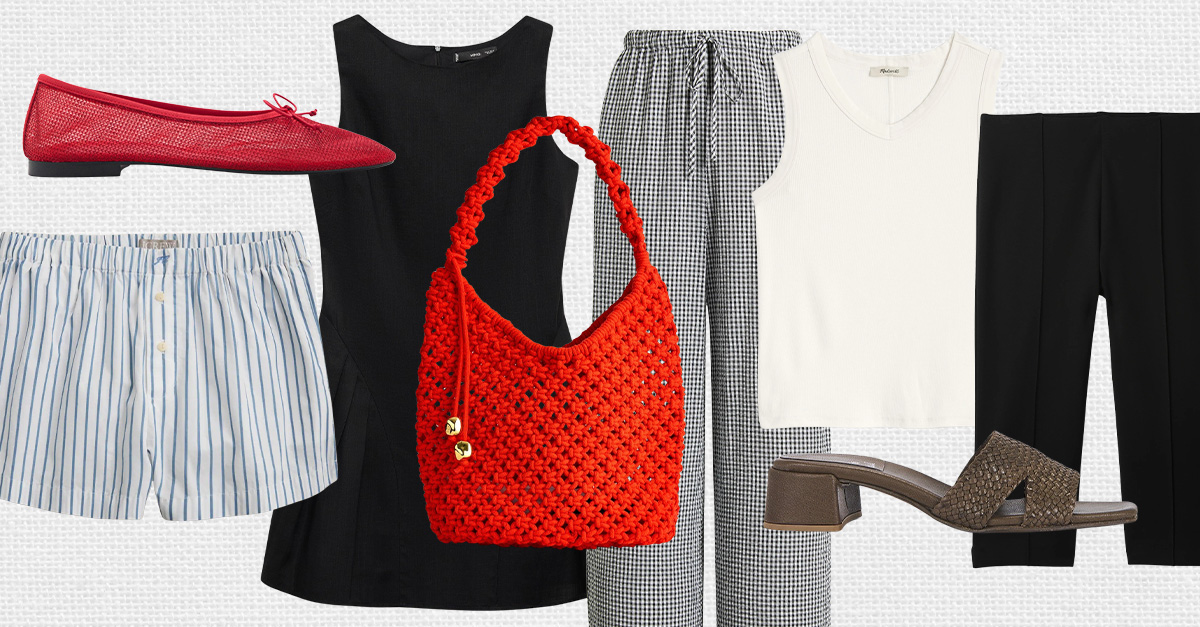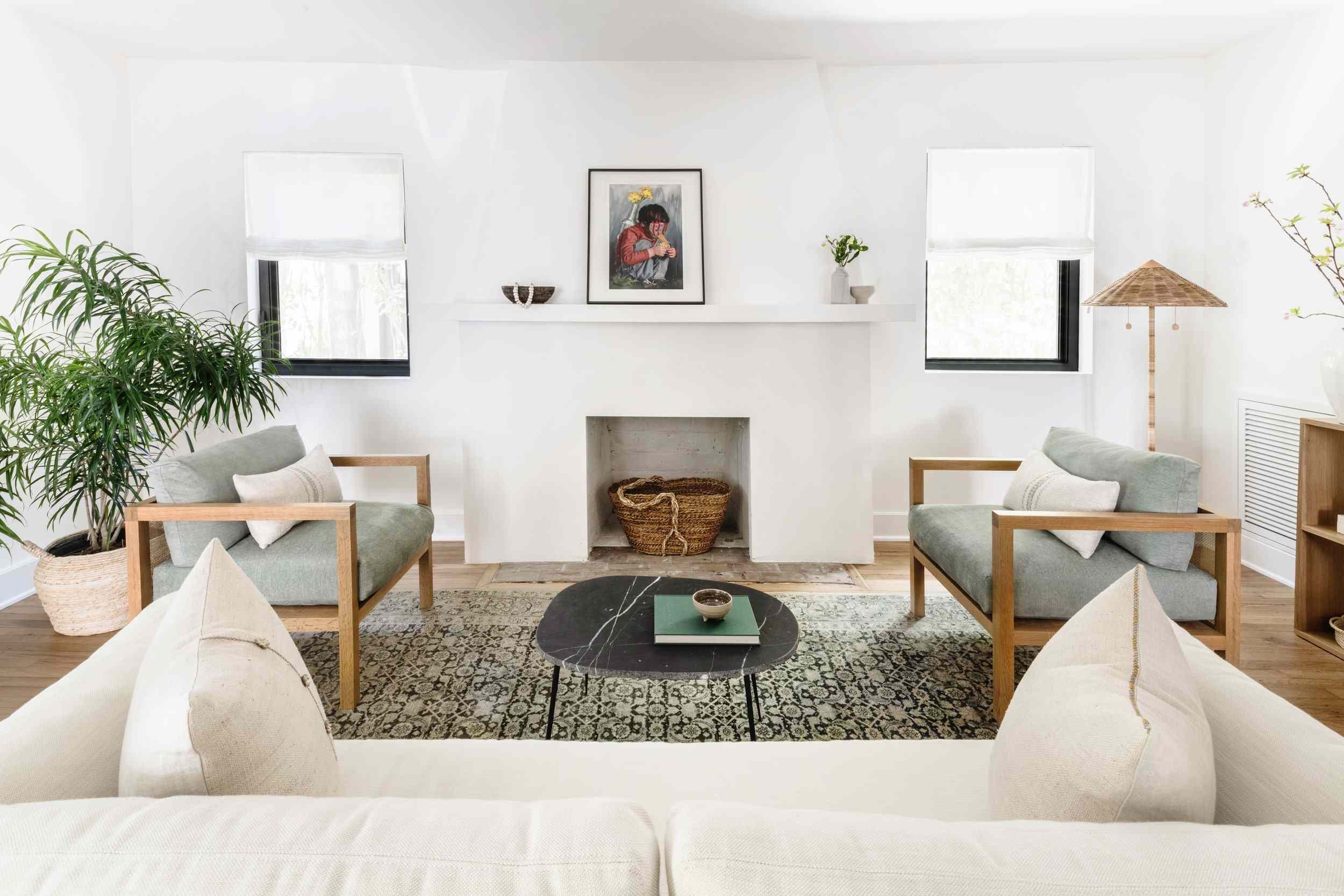Key Takeaways
- Keep sofas and televisions away from shorter walls of long living rooms to avoid a bowling alley effect.
- Double sofas, vertical shelves, and L-shaped sectionals can balance a long living room’s shape.
- Float your furniture and place accents along shorter walls to keep a long living room from feeling empty.
Frequently seen in historical homes and apartments, a long living room can be one of the most challenging spaces to fit furniture into. But when they’re well planned-out with the help of some clever tips and visual tricks, these funky rectangular-shaped rooms can truly shine.
If you’ve been struggling to visualize the best spots to place furniture in your long and narrow space, our experts have you covered with foolproof long living room layout ideas.
Meet the Expert
- Elizabeth Vergara is an interior designer, and CEO and founder of design-and-build firm Vergara Homes.
- Nina Lichtenstein is a home designer and the founder of her eponymous custom home design firm.
- Samantha Tosti is an interior designer, and the co-founder of design and woodworking firm Tosti Design.
Zone With Area Rugs
Although they can be tricky to work with, one of the biggest benefits of a long living room is the natural flow it can have; all our experts encourage creating clear zones for entertaining, reading, or working to help fill the space and naturally progress through your daily routines.
“One of the most elegant ways to style a long living room is to embrace the room’s length while creating purposeful zones that feel cohesive,” interior designer Elizabeth Vergara says.
For home designer Nina Lichtenstein, an area rug is the best way to define these zones and help lay out the space.
“In a long living room, rugs act as visual boundaries,” she says. “Use one large rug to tie a main seating area together, or multiple rugs to define separate spaces within the same room.”
Want more design inspiration? Sign up for our free daily newsletter for the latest decor ideas, designer tips, and more!
Keep Focal Furniture Along Longer Walls
Emily Henderson Design / Photo by Ajai Guyot
A living room is a hub for both entertaining guests and everyday moments with family. Everything we do in these spaces revolves around our televisions and sofas, so they tend to catch our eyes first.
“When it comes to long living rooms, I always try to avoid putting the focal point at the end of the room, which results in a bit of a bowling alley effect,” interior designer Samantha Tosti says. “A sofa facing the long wall with a chair or two at the end gives an open, conversational feel.”
Look for L-Shaped Sectionals
The Spruce / Alyssa Vela
As the biggest piece of furniture in any living room, a sofa will always be the main element to craft your layout around. One of Tosti’s favorite options for long and narrow spaces is an L-shaped sectional, which can feel perfectly made for a room with a similar shape.
“A sectional sofa in particular lets you capitalize on the length of the room and makes it feel larger and more open, but also provides a cozy atmosphere for snuggling up and watching a movie,” Tosti says.
Try Cozy Double Seating
A sense of balance is important in any living room—but it’s especially key in long ones, which can feel cramped when the layout isn’t thought out.
To maintain a sense of openness in even the most narrow of spaces, Lichtenstein suggests opting for double sofas on either side of an area rug, or placing one long sofa across from a pair of accent chairs for the same conversational feel and a similar sense of symmetry.
“This layout creates a formal yet welcoming atmosphere, and it works especially well when centered beneath a statement light fixture, or framed by windows or built-in shelving,” she says.
Float Your Furniture Pieces
If you want to prevent the dreaded bowling alley effect, all of our designers say a floating furniture setup is key. And while this technique is ideal for any long living room, it works especially well in open-plan layouts, where setting a sofa facing the longest wall can create a clear cozy zone.
“Pushing all the furniture against the walls can make a long living room feel like a hallway,” Lichtenstein says. “Instead, float seating pieces toward the center of the room to create intimacy and depth.”
“It’s important to remember that long living rooms aren’t meant to be filled wall to wall,” Vergara adds. “Leaving negative space, especially in walkways and between groupings, actually enhances the room’s proportions and makes it feel intentional.”
Use Vertical Storage and Shelving
Because of their shape, many long living rooms can look narrow and short. So to help bring a sense of height and balance back into the space through layout, our designers recommend leaning into vertical forms of storage.
Whether it’s a set of built-in open bookshelves or a narrow lift-top coffee table, keeping storage and displays working upwards instead of outwards keeps footpaths open and can also give the illusion of a taller ceiling and more proportionate space.
Introduce Accents to Anchor
Whether it’s a window, fireplace mantel, or period feature, many long living rooms already have an architectural focal point on their shorter walls to naturally help with flow.
“To prevent the room from feeling like it trails off at either end, place visual anchors at both sides, such as built-ins, a decorative bench, or a storage cabinet,” Lichtenstein suggests. “These elements draw the eye across the room, and keep the space feeling complete.”
If you have any accent chairs, shelves, or tables that your layout needs to include, use them either in place of that point or to complement. This will keep plenty of precious walking space available and will work well visually.











